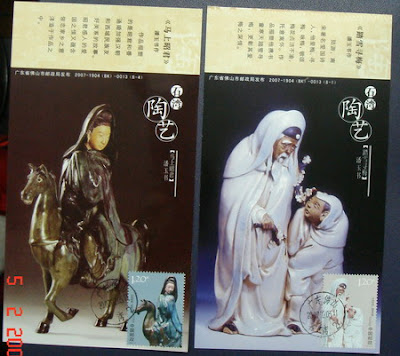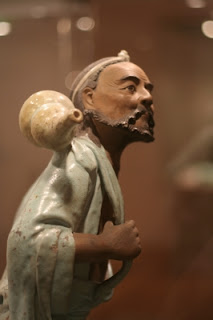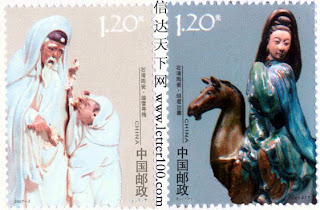 The Tibetan Mastiff is a large, powerful, and well built dog but with a noble and gentle appearance. The dogs are well adapted to the climates of the Himalayas and to the harsh high mountain living. For thousands of years, it has served as guardian and protector of live stocks, homes and traveling caravans of the Tibetan people. Very little was known about them until in recent years, when having them as pets have become popular in the Western world. Today, pure Tibetan Mastiff is hard to find, but dedicated and concerned breeders continue to promote awareness for the well being these impressive dogs. Info: American Tibetan Mastiff Association
The Tibetan Mastiff is a large, powerful, and well built dog but with a noble and gentle appearance. The dogs are well adapted to the climates of the Himalayas and to the harsh high mountain living. For thousands of years, it has served as guardian and protector of live stocks, homes and traveling caravans of the Tibetan people. Very little was known about them until in recent years, when having them as pets have become popular in the Western world. Today, pure Tibetan Mastiff is hard to find, but dedicated and concerned breeders continue to promote awareness for the well being these impressive dogs. Info: American Tibetan Mastiff Association The Pekingese dog has been a companion dog of kings and queens for centuries. They were one of the purest and oldest breed of dogs in the world due to their exclusive function as royal pets. Their appearance has hardly changed at all. Because they look like miniature lions, their name in Chinese means "the lion dog". An interesting story I found in Wikipedia is that the Empress CiXi of China liked to present these dogs to her American friends. One of them was presented to the daughter of Ted Roosevelt.
The Pekingese dog has been a companion dog of kings and queens for centuries. They were one of the purest and oldest breed of dogs in the world due to their exclusive function as royal pets. Their appearance has hardly changed at all. Because they look like miniature lions, their name in Chinese means "the lion dog". An interesting story I found in Wikipedia is that the Empress CiXi of China liked to present these dogs to her American friends. One of them was presented to the daughter of Ted Roosevelt. Info: Wikipedia
Below is an old photo of a Pekingese from 1912.
They certainly know how to take good pictures of dogs back then.
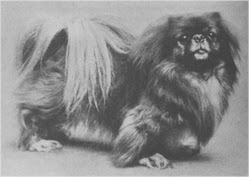
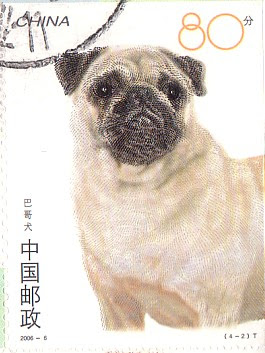 Pugs are really popular as pet dogs. They have a very wrinkly face and very large eyes. They are generally small with short but stout legs and very cheerful.
Pugs are really popular as pet dogs. They have a very wrinkly face and very large eyes. They are generally small with short but stout legs and very cheerful. 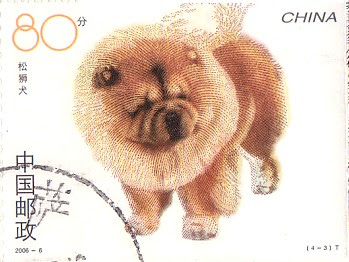 Chow Chow dogs are puffy looking dogs the I really like. Their name in
Chinese means "puffy lion dog", which suits them alright. They probably
originated from Mongolia but I am not sure. They are also very popular
pet dogs and I see them on the street all the time. I found an article online about Chow Chow。 It says "There is a beautiful and
ancient fairy-tale that says that while God painted the sky blue, he was
followed by a determined Chow Chow who licked up the drops that fell
with his tongue." That is the reason why Chow Chows have blue tongues.
Very imaginative indeed. Info: The ChowChow Blog
Chow Chow dogs are puffy looking dogs the I really like. Their name in
Chinese means "puffy lion dog", which suits them alright. They probably
originated from Mongolia but I am not sure. They are also very popular
pet dogs and I see them on the street all the time. I found an article online about Chow Chow。 It says "There is a beautiful and
ancient fairy-tale that says that while God painted the sky blue, he was
followed by a determined Chow Chow who licked up the drops that fell
with his tongue." That is the reason why Chow Chows have blue tongues.
Very imaginative indeed. Info: The ChowChow BlogFinally, here's a cover I received last year. Love and take care of your pets.

